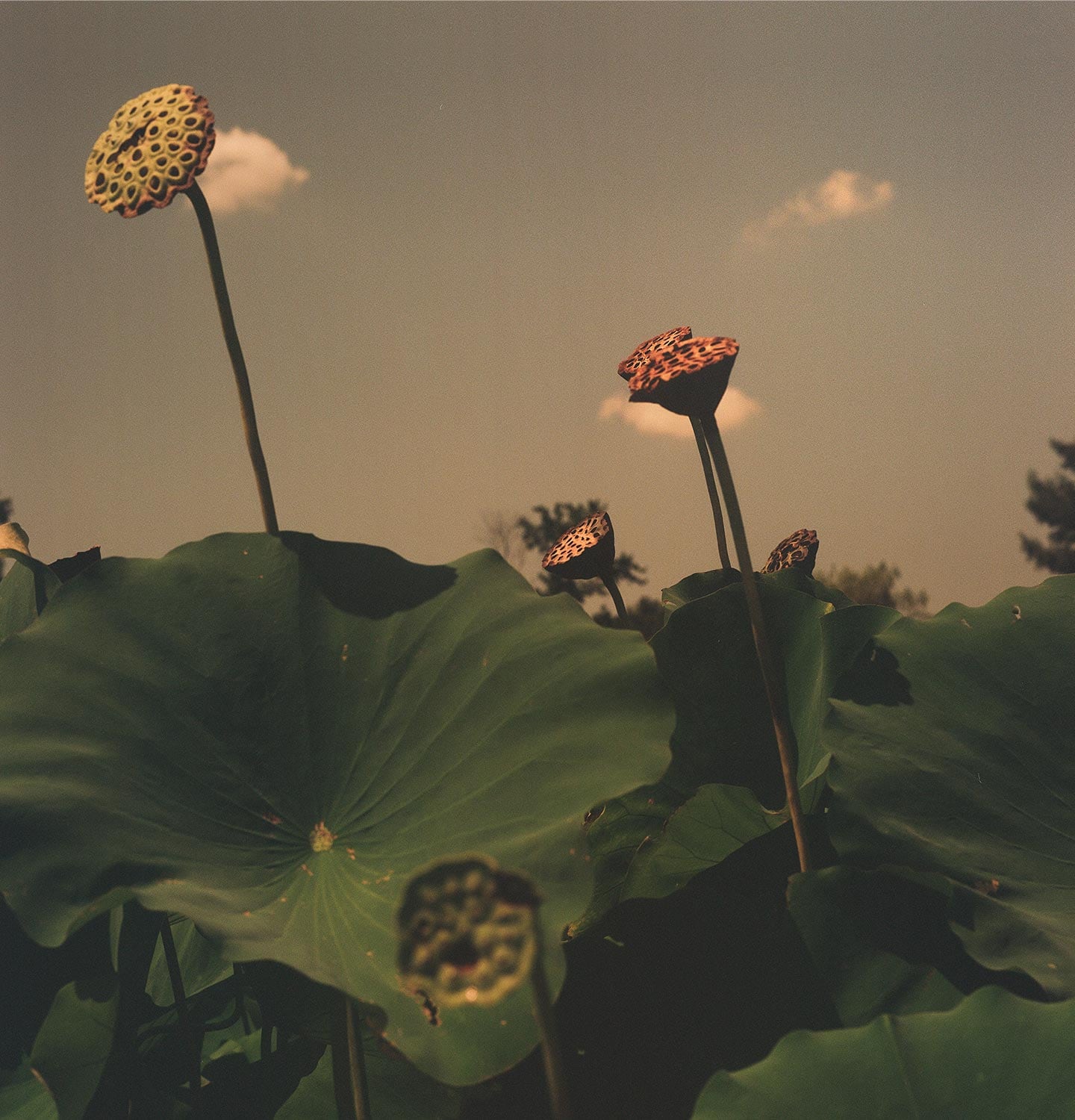What drew you to the theme of aquatic botanicals?
I've always been drawn to flowers of all sorts, and during my youth, the Kenilworth Aquatic Gardens were new to me. I had never been there, and it just became an exploration in that sense. It is interesting where the Aquatic Gardens are in Washington DC. They are located in the neighborhood of Kenilworth, which is untouched by gentrification and is a well-known area mainly comprising African-American families. It’s interesting how the people who come to visit that space aren't the local residents.
How do you define the beauty of flowers?
I think it's just beauty. The aesthetics and variety of them. I see flowers for what they are—just beautiful in that way. I used to have a farm in Brandywine, Maryland, and we grew flowers. I tried to grow Dahlias which didn't work out, but they are super resilient. It's like there are two sides to the coin. They can withstand storms but other things—the wrong temperature or soil—can almost destroy them. They're equally as delicate as they are tough.
What elements of architecture and interiors do you draw inspiration from? Do you look to particular buildings or areas in DC?
Most of my inspiration comes from the composition and geometric shapes, the natural line play that exists in the lapping of building and the negative space created by the skyline. Washington DC has a surplus of buildings. The juxtaposition of the non-gentrified DC that I grew up in and the gentrification today is interesting as well. I can capture a new glass building in the background of an older building downtown—these different textures. A lot of the city is industrial in the midst of modern, sleeker architectures. It is more about composition, such as the industrial and ultra-urban.
What draws you to Aesop’s architecture? Do you feel connected to particular store designs?
I definitely connect in particular with the interior. The unique interior designs of the stores are 90% of why I spend all my money in there. I’ve been to the Washington DC stores and I love the lighting, the concave and convex architecture. It really speaks to me. The interiors, varying layers of texture, and the lighting are three reasons I would say that I connect with Aesop and their store design.
What do you want people to take away from your work? What is the intention behind the photos that people can see in the Aesop Georgetown Spotlight?
My art is a matter of self-expression. I don’t set up lights, I don’t shoot digital and do 1000 renders after. I walk around and I’ll shoot what I can. You have to just be free to do what you want—I think that’s especially true for black people. As a black person, you are constantly compared to non-POC counterparts, are always up against something, and I think that art, and being a black artist, is the same way. I think it's really important to just do whatever you want. If people don't like it, that's fine, it’s not for everyone, and you can own that. Own what you want to do, only the perspective that you want to see matters. I think that is the main point. I want people to view my art and find that same authority within themselves. It’s like we’re forced into a category and it’s really about breaking free from that.
Do you have a favorite quote, piece of literature or art that speaks to you or your work, that might give people the same empowerment and authority you’ve found?
One of my favorite quotes is from Frank Bidart’s By These Waters: ‘What begins in recognition … ends in obedience.’ Ultimately, we want to be recognized. The most important thing is as much as you can live with yourself.
Your work is delicate and carefully shot. What are some considerations that come to mind when preparing to shoot different types of photography?
One fundamental element of my work that ironically operates as a means to an end is that I only shoot film and, in fact, only know how to shoot film. These factors almost create a function. Film is delicate, where I am intrinsically hyperactive, attention-wise. I would say my approach throughout different subjects and environments I hope (and feel as such) doesn't change. Film is pretty forward and stubborn and that element of it keeps me in love with it. I feel as though I can only choose a different camera—the rest is up to what I can make of what's in my viewfinder and what elements the film will offer in the process.
